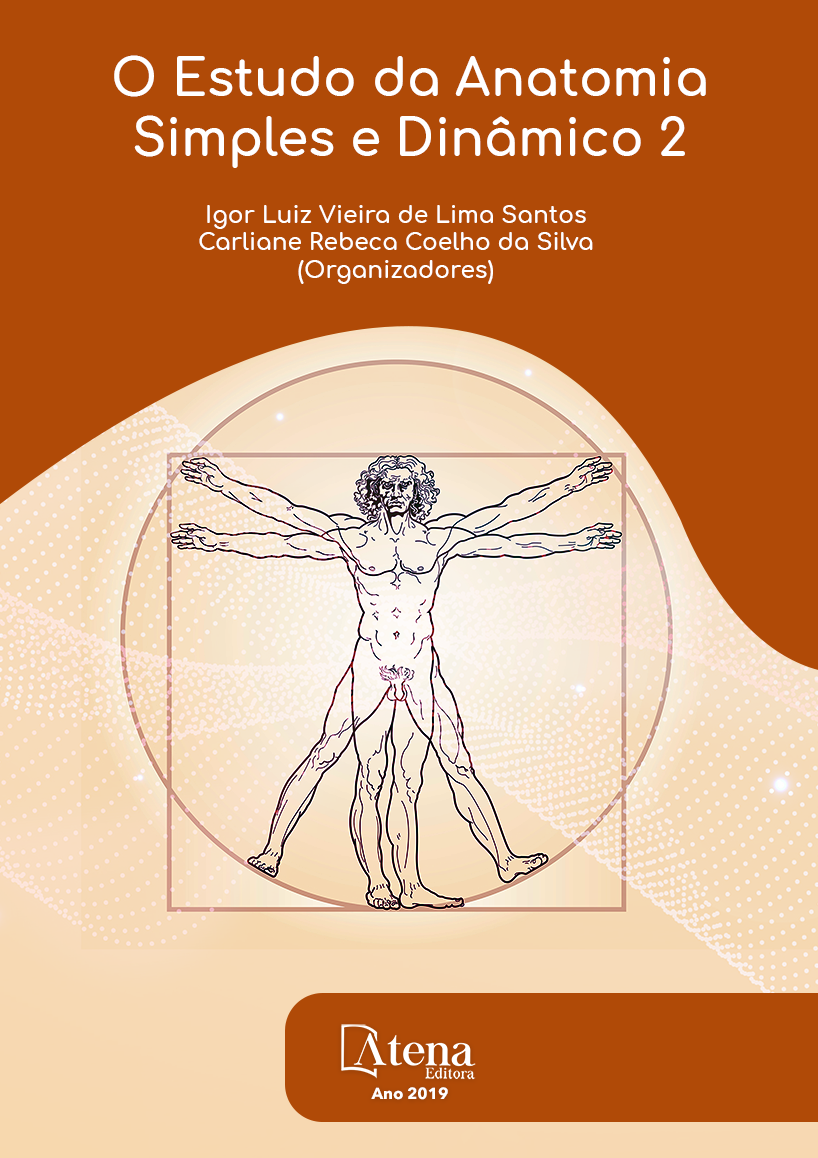
ESTIMANDO GRUPOS ÉTNICOS ATRAVÉS DE ÍNDICES CRANIOMÉTRICOS
Introdução: As diferenças étnicas
são perceptíveis sobretudo no crânio podendo
ser classificadas através de diversos métodos
morfométricos. Esses métodos foram criados
para reduzir a subjetividade referente à
investigação da afinidade populacional de
crânios. Dentre esses parâmetros estão o índice
cefálico horizontal e índice cefálico transversal.
Apesar da determinação étnica no Brasil
ser bastante prejudicada em decorrência do
elevado grau de miscigenação, sua estimativa
deve ser investigada para elaboração de
dados referentes a essa população. Objetivo:
Classificar a etnia de crânios humanos através
de índices cefálicos e compará-los entre si.
Metodologia: Foram avaliados 52 crânios
adultos conservados e completos, provenientes
da Coleção de Ossos Contemporâneos
da Universidade Federal de Pernambuco,
com autorização do comitê de ética sob o
protocolo CAAE n° 66287517.7.0000.5208. As
mensurações foram realizadas com paquímetro
(0,01mm/0,0005mm digital caliper) e compasso
de espessura (acurácia de 0,1”). Foram mensuradas: a distância basion-bregma (altura
craniana máxima) e distância eurion-eurion (largura craniana máxima) para calcular
o ICT. E a distância eurion-eurion (largura craniana máxima) e distância glabella
opisthokranion (comprimento craniano máximo) para o ICH. Resultados: Através do
ICT classificamos os crânios da Coleção em 30,8% como mongólicos (n=16), 38,4%
como caucasianos (n=20) e 30,8% como caucasianos e negroides (n=16). E através do
ICH classificamos os crânios em 36,6% mongólicos (n=19), 34,6% como caucasianos
(n=18) e 28,8% como caucasianos e negroides (n=15) Conclusão: O estudo reafirma
o alto grau de miscigenação brasileira e revela a dificuldade de identificar a etnia de
crânios, devido ao grande número de características étnicas presentes num mesmo
indivíduo.
ESTIMANDO GRUPOS ÉTNICOS ATRAVÉS DE ÍNDICES CRANIOMÉTRICOS
-
DOI: 10.22533/at.ed.33119250911
-
Palavras-chave: Antropologia forense. Anatomia. Crânio. Grupos étnicos
-
Keywords: Forensic anthropology. Anatomy. Skull. Ethnic groups.
-
Abstract:
Introduction: Ethnic differences are perceptible especially in the skull,
and can be classified through several morphometric methods. These methods were
created to reduce the subjectivity related to the investigation of the population affinity
of skulls. Among these parameters are the horizontal cephalic index and the transverse
cephalic index. Although the ethnic determination in Brazil is greatly impaired due to
the high degree of miscegenation, its estimate must be investigated for the elaboration
of data referring to this population. Objective: To classify the ethnicity of human
skulls through cephalic indices and compare them to each other. Methods: Fifty-two
preserved and complete adult skulls from the Collection of Contemporary Bones of the
Federal University of Pernambuco were evaluated, with the authorization of the ethics
committee under CAAE protocol no. 66287517.7.0000.5208. Measurements were
performed with a caliper (0.01mm / 0.0005mm digital caliper) and a thickness caliper
(accuracy of 0.1 “). The basion-bregma distance (maximum cranial height) and eurioneurion
distance (maximum cranial width) were calculated to calculate the TCI. And the
distance eurion-eurion (maximum cranial width) and distance glabella opisthokranion
(maximum cranial length) for the HCI. Results: Through the TCI, we classified the skulls
of the Collection into 30.8% as mongolics (n = 16), 38.4% as Caucasians (n = 20) and
30.8% as Caucasians and Negroides (n = 16). And through the HCI we classified
the skulls in 36.6% mongolics (n = 19), 34.6% as Caucasians (n = 18) and 28.8% as
Caucasians and Negroides (n = 15). Conclusion: The study reaffirms the high degree
of Brazilian miscegenation and reveals the difficulty of identifying the ethnicity of skulls,
due to the large number of ethnic characteristics present in the same individual.
-
Número de páginas: 15
- Carolina Peixoto Magalhães
- Camilla Emanuella Borba Pereira
- Karolayne Gomes de Almeida
- Vitoria Andrade Bezerra
- Rita Santana dos Reis
- Fernanda Alda da Silva
- André Pukey Oliveira Galvão
- João Vitor da Silva
- Suzany Karla de Araújo Silva
- Bertandrelli Leopoldino de Lima
- Maria Andrelly Matos de Lima
- Danielly Alves Mendes Barbosa


